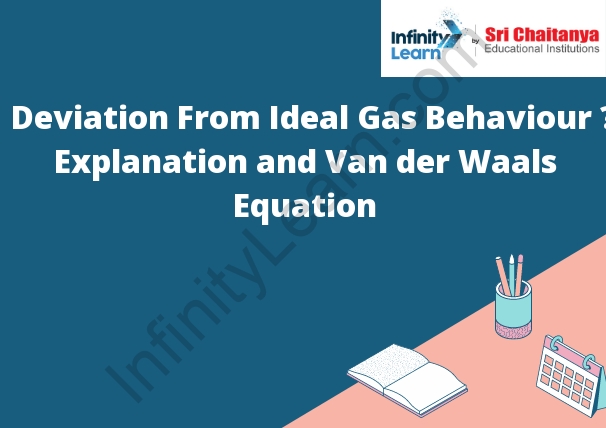Table of Contents
An introduction to the Ideal Gas Behaviour
The Ideal Gas Behaviour is a set of mathematical rules that govern how gas molecules behave when they are in a container. These rules are based on the idea that gas molecules are small and do not interact with each other. This behaviour is used to model the behaviour of gases in the real world. Deviation From Ideal Gas Behaviour – Explanation and Van der Waals Equation.

Ideal and Real Gases
An ideal gas is a theoretical gas that obeys the ideal gas law. The ideal gas law states that the pressure, volume, and temperature of a gas are all related by a constant. Real gases are not perfect, so they do not obey the ideal gas law exactly. However, real gases can be approximated by the ideal gas law if the gas is in a low-pressure environment.
Difference Between Ideal Gas and Real Gas
The difference between an ideal gas and a real gas is that an ideal gas is a model that assumes that the gas molecules are point masses that do not interact with each other. A real gas is a gas that is made up of molecules that interact with each other.
Pressure, Volume, and Temperature Relationship in Gases – Why do the Real Gases Deviate?
The ideal gas law is a mathematical model that describes the pressure, volume, and temperature of an ideal gas. An ideal gas is a hypothetical gas that obeys the following three laws:
The law of constant pressure states that the pressure of an ideal gas is constant.
The law of constant volume states that the volume of an ideal gas is constant.
The law of constant temperature states that the temperature of an ideal gas is constant.
The ideal gas law is a good approximation of the behavior of real gases, but real gases do not obey the law of constant pressure, the law of constant volume, or the law of constant temperature. The reason for the deviation of real gases from the ideal gas law is the presence of intermolecular forces.
Intermolecular forces are the forces that exist between the molecules of a gas. These forces are responsible for the deviation of real gases from the ideal gas law. The stronger the intermolecular forces, the greater the deviation of the real gas from the ideal gas law.
The temperature of a gas is a measure of the average kinetic energy of the molecules of the gas. The higher the temperature, the greater the average kinetic energy of the molecules. The greater the average kinetic energy of the molecules, the greater the deviation of the real gas from the ideal gas law.
The pressure of a gas is a measure of the force exerted by the gas molecules on the walls of the
Van der Waals Equation
The van der Waals equation is a mathematical equation used to model the behavior of real gases. The equation is named for Dutch physicist Johannes Diderik van der Waals, who developed it in 1873.
The van der Waals equation takes into account the fact that real gases do not behave like ideal gases. In particular, the equation accounts for the forces of attraction between the molecules of a gas. These forces are called van der Waals forces.
The van der Waals equation can be used to calculate the pressure, volume, and temperature of a gas. It can also be used to calculate the amount of energy that a gas can store.
Deviation From Ideal Gas Behaviour – Explanation and Van der Waals Equation.






